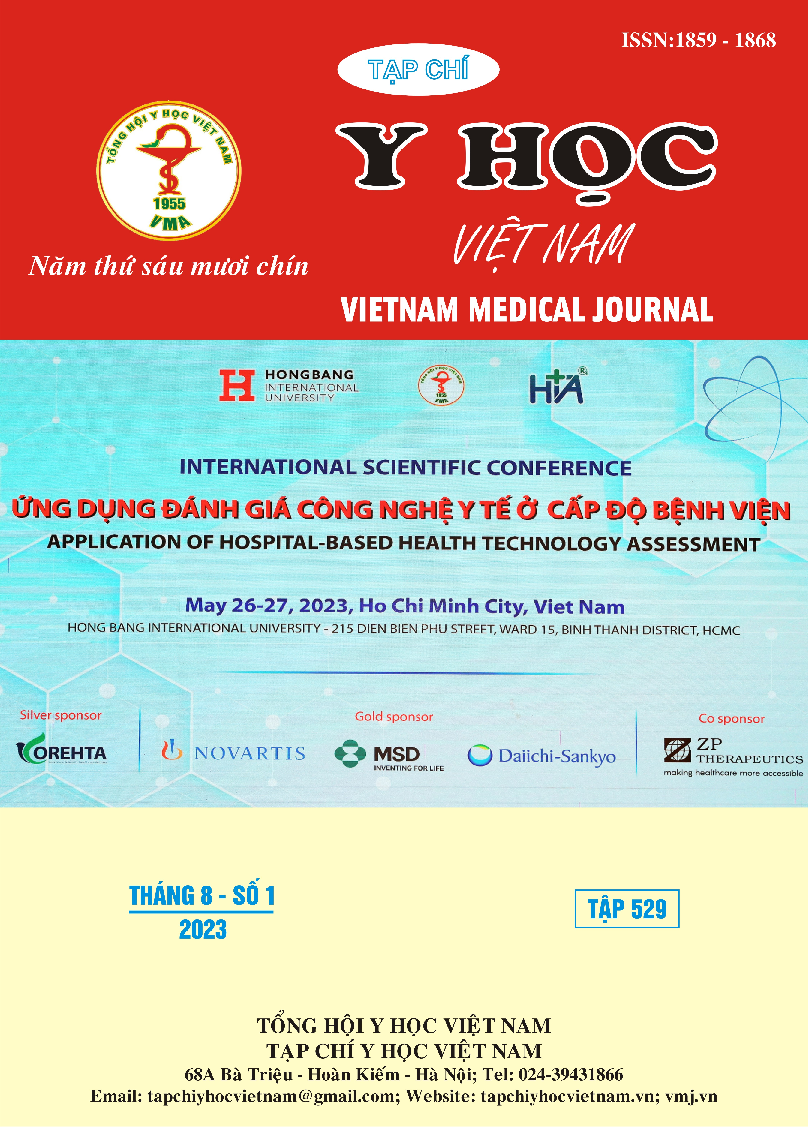EVALUATION OF ULTRASTRUCTURAL LIVER TISSUE DAMAGE IN VIETNAMESE WITH CHRONIC DIOXIN TOXICITY USING SCANNING ELECTRON MICROSCOPY
Main Article Content
Abstract
Objective: To evaluate the ultrastructural liver tissue damage in Vietnamese with chronic dioxin toxicity. Subjects and methods: This study used liver biopsy samples from 33 patients exposed to dioxin. The research method was cross-sectional and analyzed using scanning electron microscopy (SEM). The sample preparation process included washing and fixation with glutaraldehyde and osmic acid solution before gold plating and observation under SEM. Results: SEM observation showed images of liver tissue damage in all 33 cases. The damage was mainly due to the infiltration of inflammatory cells at different levels. The images showed the infiltration of fiber bands into the Disse space, the space between liver cells. At the same time, changes were observed in the ultrastructural morphology of mitochondria, and endoplasmic reticulum. These are typical liver tissue damage due to dioxin poisoning. Conclusion: Through SEM observation, chronic exposure to dioxin has caused liver tissue damage, especially in the Disse space and liver cells. This damage is mainly due to the infiltration of inflammatory cells and fiber bands at different levels, and there are changes in the ultrastructural morphology of liver cells. These are typical liver tissue damage due to dioxin poisoning.
Article Details
Keywords
: Dioxin, liver tissue damage, ultrastructure, SEM.
References
2. WHO;, Dioxins and their effects on human health. World Health Organization, 2016.
3. Thanh;, K., Đánh giá tác hại của chất độc da cam/dioxin do Mỹ sử dụng trong chiến tranh ở Việt Nam. Báo điện tử Đảng cộng sản Việt Nam;, 2016.
4. VAVA, Đề cương tuyên truyền 60 năm chất độc da cam.pdf. 2021.
5. Tùng, Đ.V., Nghiên cứu sự thay đổi nồng độ hormon steroid trong nước bọt, sữa và huyết thanh trên những người sống tại vùng phơi nhiễm chất Da cam/dioxin ở Việt Nam., in sdh.hmu.edu.vn. Đại học Y Hà Nội: Hà Nội.
6. Garabrant, D.H. and M.A. Philbert, Review of 2,4-dichlorophenoxyacetic acid (2,4-D) epidemiology and toxicology. Crit Rev Toxicol, 2002. 32(4): p. 233-57.
7. Nishizumi, M., Light and electron microscope study of chlorobiphenyl poisoning. In mouse and monkey liver. Arch Environ Health, 1970. 21(5): p. 620-32.
8. Kimbrough, R.D., R.E. Linder, and T.B. Gaines, Morphological changes in livers of rats fed polychlorinated biphenyls: light microscopy and ultrastructure. Arch Environ Health, 1972. 25(5): p. 354-64.
9. Fenton;, S., The Structural Basis of Altered Hepatic Function in Viral Hepatitis. The American Journal of Medicine, 1970. 49.
10. J.C;, B., PCB congener 126-induced ultrastructural alterations in the. Elsevier-Toxicology, 1999. 136: p. 8.


